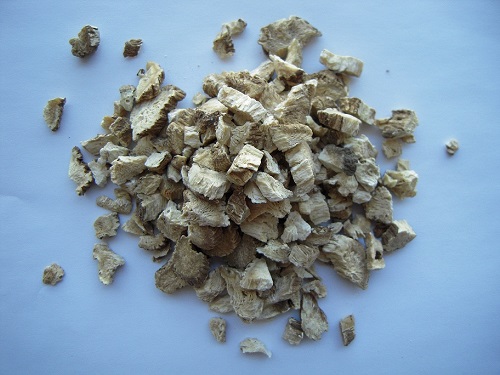Burdock Root Cut

Botanical name: Arctium lappa L.
Burdock root is a popular folk remedy, and
the fresh root is also a tasty vegetable. It is a superior tonic herb and
alterative herb. Burdock has a special affinity for the skin and is used in all
types of skin preparations. It also makes a pleasant tasting tea.
Burdock is a wide-ranging plant,
native or naturalized across North America, Europe and Asia. Usually a
biennial, it consists of a rosette of leaves the first year, becoming tall and
stately when it is in full bloom in the second year. It can grow up to ten feet
tall and three feet wide. It"s large, broad leaves, which resemble rhubarb
leaves, are bright green with the undersides covered with white, wooly hairs.
The flowers are purple and thistle-like in appearance. The burr-like fruits
stick to clothing and animal fur and can be painful to remove. Burdock has a
long, slender taproot that can grow up to three feet deep. It is commonly found
in waste areas and is often considered an annoying weed because of its large
size, clinging burs and persistent growth.
The taproot is the part used as the herb.
It should be harvested in the fall of the first year, since inulin levels will
be highest then. In the spring, the root is more depleted of its energy — and
once the roots start to grow, they are considered too weak to be useful.
Burdock roots are
considered purifying, cleansing, cooling and tonifying to the body. They have a
special affinity for the skin and are used both internally and externally for
improving skin health. Burdock is often combined with yellowdock root, cleavers
or red clover to make a tea or skin wash.